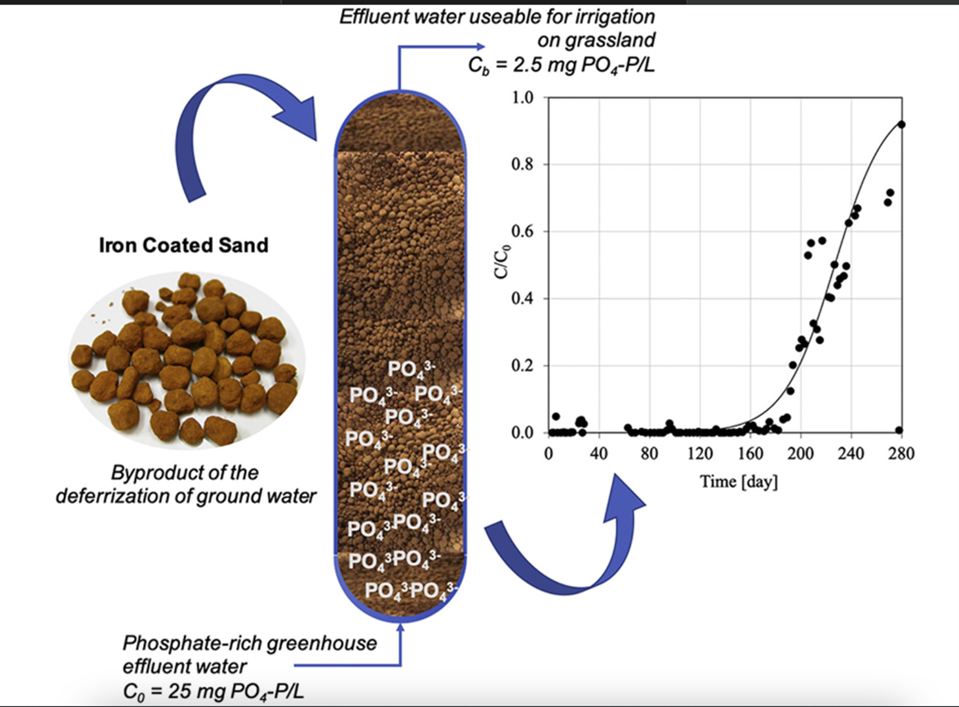Nutrient enrichment in water bodies, and its detrimental consequences, are a well known and worldwide environmental problem. Agricultural activities are identified as an important source of diffuse losses of phosphate and nitrate because of the leaching out fertilizers from agricultural fields. This study en- compasses the implementation of an end-of-pipe treatment by capturing phosphate from greenhouse effluent, using granular iron-coated sand (ICS) in an adsorption process. ICS is evaluated as a low-cost by- product because of its adsorption capacity and kinetics. The Langmuir isotherm was suitable for describing the adsorption thermodynamics. The adsorption capacity at an equilibrium concentration Ce of 25 mg PO4eP/L ranged between 1.85 and 3.07 mg PO4eP/g sorbent. Furthermore, both the pseudo- second-order model (R2 1⁄4 0.9823) and the Elovich model (R2 1⁄4 0.9803) showed a good fit with the kinetic data over the time range investigated, indicating that chemisorption is the rate-limiting step controlling the adsorption process. Higher adsorption capacities were observed at lower initial pH. Continuous bench-scale column experiments were performed to verify the adsorption potential of a filter bed under flow-through conditions, and the experimental data were fit to the Bohart-Adams model. Additionally, a discontinuous feeding regime of the column, resulting in intermediate resting periods, was introduced and showed an enhanced adsorption efficiency over a longer period. Finally, a pilot-scale experiment showed the potential of the ICS for the removal of phosphate from greenhouse effluent. The adsorption process, moreover, enables the recovery of phosphate via efficient desorption.
Reference to the paper: Nico Lambert, Pieter Van Aken, Rob Van den Broeck, Raf Dewil (2020). Adsorption of phosphate on iron-coated sand granules as a robust end-of-pipe purification strategy in the horticulture sector. Chemosphere, 267, 129276. https://doi.org/10.1016/j.chemosphere.2020.129276

